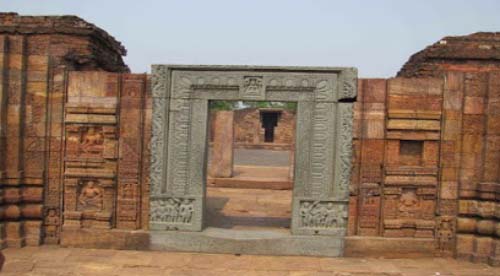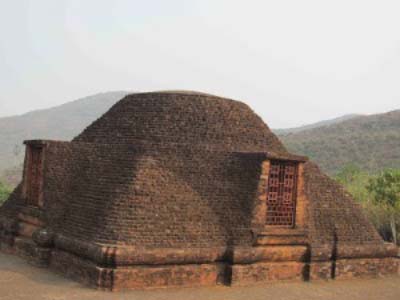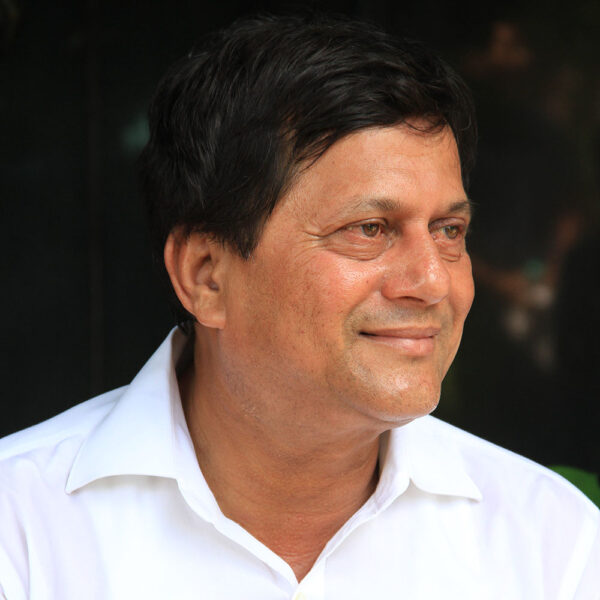Odisha has always become mystical and mysterious about its offering to global travellers. The state has been the custodian of more than 2000 years of cultural & historical legacy which people are yet to explore. The marvellous discovery of the Buddhist establishments of Ratnagiri, Udayagiri & Lalitgiri by Archaelogical Survey of India (ASI), abandoned around 1000 years during the fall of Buddhism in India, is reframing the colourful glory of the grandeur of Kalingan architecture.
Though Lord Buddha spent his life in Nepal, Bihar and U.P., but without contribution of Odisha, the influence of Buddhism would have limited to Northern India. Buddhism became a world religion only after Kalinga-Asoka war and because of the vast maritime trade route of Kalinga. And all these happened only after 200 years of the Maparinirvana of Lord Buddha at Kushinagar.
But association of Buddhism with Kalinga started during the life of Lord Buddha as his first disciples, Tapusa and Bhallika, were honey traders from Ukkala (Odisha had several names in the past- Kalinga, Odra & Ukkala). Buddhism continued to be the religion of Odisha till 12th century A.D. Two hundred years of Bhaumakara rule, from 8th to the 10th century AD, are considered as the golden epoch of Buddhism in Odisha.
In the Buddhist Jataka stories of the fourth and third centuries B.C., a kingdom of Kalinga is mentioned with Dantapura as its capital. From Dantapura, the most venerated relic of Buddhism, Buddha’s tooth, was brought to Sri Lanka. This tradition forms the basis of a lasting relationship between Kalinga and Sri Lanka.

The Buddhist monastic establishment at Ratnagiri dated from 5th century to 13th century AD became one of the last shelters of Buddhism in the country when the religion declined in other parts of India. The finest relic of Buddhist art at Ratnagiri is a magnificent doorjamb adorning Monastery 1 which represents the highest watermark of decorative art of India.
Udayagiri or the “Sun rise Hill”, the most picturesque among the three is situated on the slope of a crescent shaped low hill. This site, a Mahayana-Vajrayana site was a vibrant center of Buddhist learning and worship between 8th to 13th centuries AD.
 Lalitgiri is one of the oldest Buddhist establishment in the world as the iconographic analysis indicates that this site had already been established during the Sunga period of the 2nd century BC. The hilltop Mahastupa at Lalitgiri is 15 meter in diameter, and is constructed in Sanchi style which is visible from afar.
Lalitgiri is one of the oldest Buddhist establishment in the world as the iconographic analysis indicates that this site had already been established during the Sunga period of the 2nd century BC. The hilltop Mahastupa at Lalitgiri is 15 meter in diameter, and is constructed in Sanchi style which is visible from afar.
Also, the site of Dhauligiri in Bhubaneswar is a major tourist attraction because of the modern Shanti Stupa (or Peace Pagoda) constructed by Kalinga Nippon Buddha Sangha in 1972 in commemoration of the Kalinga war. Dhauligiri is also famous for the Rock Edict of Asoka (or Kalinga Edicts). Other important Buddhist sites located near the Langudi hillock at Dharamsala block of Jajpur dictrict are Vajragiri, Radhanagar, Kayama, Tarapur and Deuli. Recent archaeological explorations have reported over 340 Buddhist sites, of which 19 have been excavated so far.
All the major sites of Buddhist circuit in Odisha fall within 100 kms from Bhubaneswar airport which takes around one & half hours to reach through well maintained roads.
The advantage of Odisha is its proximity to Bodh Gaya (Bihar) and Varanasi (Uttar Pradesh), unmatched by other states with Buddhist remnants. Together, these three states can develop the Buddhist tourism corridor of India with emphasis on connectivity and infrastructure, offering sops to those who promote the circuit. Flight connectivity between Bhubaneswar and Varanasi or Gaya is highly imperative to offer a complete pilgrimage for Buddhist travellers from abroad.

The challenge with Odisha’s Buddhist offerings is that tour operators are still ignorant about this circuit. The need of the hour is aggressive promotion of the Buddhist circuit through the help of professionals, and simultaneously the development of infrastructure (hotels, air connectivity, human resources, etc.) to cater to the inbound tourist traffic. Frequent B2B roadshows, training workshops and FAM tours for the travel trade, aggressive branding exercise through outdoor advertising, social media and TV campaigns, and effective management of trade relations are highly essential. Buddhist Tourism can act as a window to attract global travellers to Odisha, and thereby other key attractions like beaches, temples, wildlife, etc. Hence, in all campaigns, Buddhist offerings should be prominently visible as the current market for Odisha lies in the Far East and South East Asian countries, and not in Europe, because of Buddhism and Root Tourism. So, there is need to revamp the marketing strategy to opt for a ‘Look East’ policy.
Hence, a visit to the land of ancient Kalinga, known for its rich cultural legacy, is a must for all those who want to connect to their roots and pay homage to the place for which Buddhism is known across the world and is today the fastest growing religion.
- Sameer Kumar Das
(An article by Sameer Kumar Das)
(The author Sameer Kumar Das works for KIIT University, Bhubaneswar as Deputy Director, School of Languages. The article was published in TravelBiz Monitor, a leading Indian travel website & publication which can be viewed with the weblink http://www.travelbizmonitor.com/mystical-odishas-buddha-trail-sameer-kumar-das-22995)


